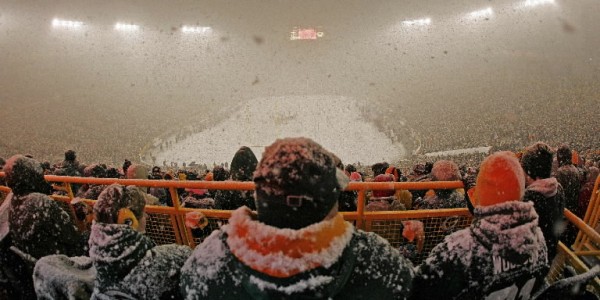There are seven stadiums in the NFL that have been around since before the 1980’s: Superdome in New Orleans, Ralph Wilson Stadium, Arrowhead, Qualcomm, Oakland’s Coliseum, Lambeau Field and Soldier Field in Chicago.
Most of the league’s stadiums have been around for 20 years or less, 14 of them opening in the last 15 years. Levi’s Stadium (San Francisco 49ers) is the latest of them, opening in 2014.
Mercedes-Benz Superdome, New Orleans, Louisiana: 1975
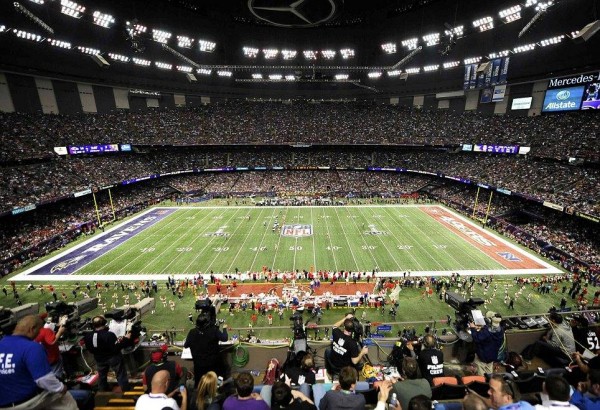
Open since August 3, 1975, it’s been the home of the New Orleans Saints ever since, although the Saints did play somewhere else while the stadium was renovated following Hurricane Katrina. The Superdome hosted thousands of those who weren’t evacuated from the city. It’s the oldest domed stadium in the league, and was known as the Louisiana Superdome until 2011.
Ralph Wilson Stadium, Orchard Park, New York: 1973
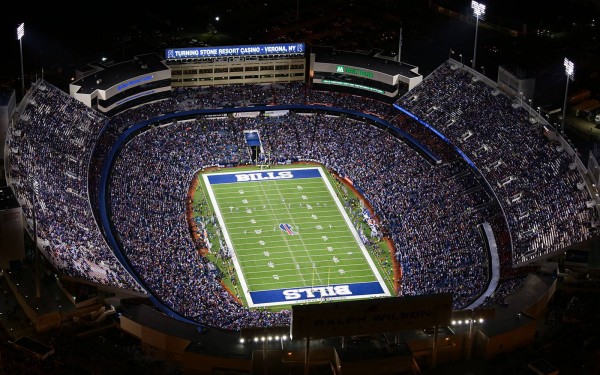
Known as Rich Stadium (Rich Products, a Buffalo-based food products company, signed a 25-year, $1.5 million deal) until 1998, it was later named for Bills owner and founder, Ralph Wilson. The Bills almost moved from Buffalo during the NFL-AFL merger with the NFL mandating a 50,000 seater as part of the entry demands (their former stadium had a 47,00 capacity). Offers from Seattle, Memphis and Tampa generated the fear of losing the team, hastening the project of building the stadium. The Bills have never lost to the Cardinals, Ravens, Packers and Bucs at the stadium.
Arrowhead Stadium, Kansas City, Missouri: 1972
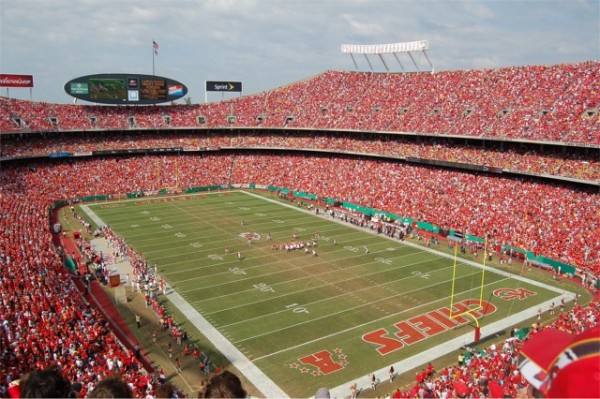
Home of the Chiefs since August 12, 1972, it’s the largest sports facility by capacity in the state of Missouri. Like the Buffalo stadium it was built to replace a stadium deemed too small for the new, merged NFL. The City of Kansas City was unable to find a suitable location for a new stadium, so Jackson County stepped in and offered a location on the eastern edge of Kansas City near the interchange of Interstate 70 and Interstate 435. On October 13, 2013, in a game between the Chiefs and Oakland Raiders, the crowd at the stadium set a Guinness World Record for the loudest stadium, with 137.5. They lost and reclaimed the title on September 29, 2014 in a Monday Night Football game against the New England Patriots, hitting 142.2 decibels.
Qualcomm Stadium, San Diego, California: 1967
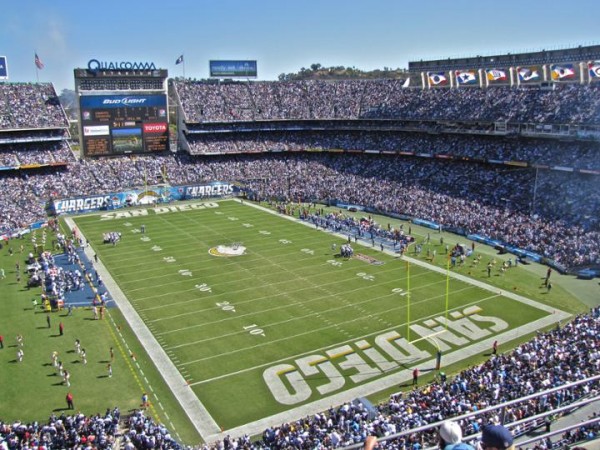
Soon to be a stadium without an NFL team, it was known as the San Diego Stadium from its opening until 1980, followed by being called Jack Murphy Stadium, a local sportswriter who began, in the 1960s, pushing for the city to build a multi-purpose stadium for San Diego. He passed away in 1980. In 1997 the Qualcomm name came to be, while the field was named after Murphy. he stadium was temporarily renamed “Snapdragon Stadium” for 10 days in December 2011 as a marketing tie in for Qualcomm’s Snapdragon brand.
O.co Coliseum, Oakland, California: 1966
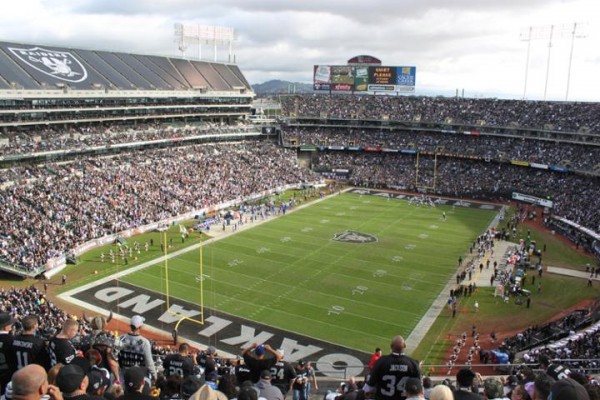
A stadium with many names over the years (Oakland–Alameda County Coliseum, Network Associates Coliseum, McAfee Coliseum, Overstock.com Coliseum) although mostly referred to as “The Coliseum”. It has an interesting illusion going on because of an underground design where the playing surface is actually below ground level, as fans entering the stadium find themselves walking on to the main concourse of the stadium at the top of the first level of seats. Combined with the hill that was built around the stadium to create the upper concourse, it means that only the third deck is visible from outside the park, giving the illusion of a very short stadium.
Lambeau Field, Green Bay, Wisconsin: 1957
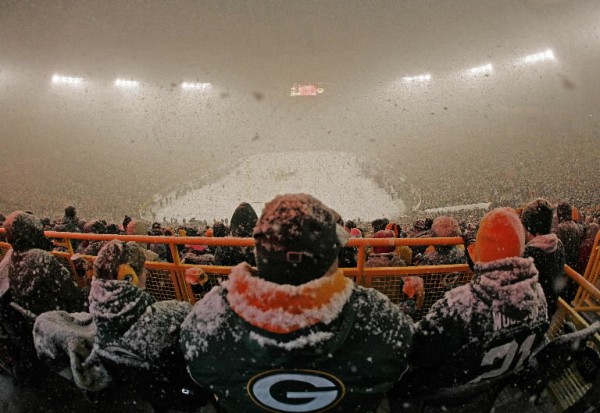
Named after Curly Lambeau, Packers founder, player, and long-time head coach, who dies two months before the stadium was named after him in 1965. It’s been the home of the Packers since September 29, 1957, undergoing nine expansions over the years (from 32,500 to 81,435) and two major renovations in the last 15 years. Three NFL teams have never won there: Ravens, Cardinals and Broncos. The Texans, with a 1-0 record, are the only unbeaten visitors.
Soldier Field, Chicago, Illinois: 1924
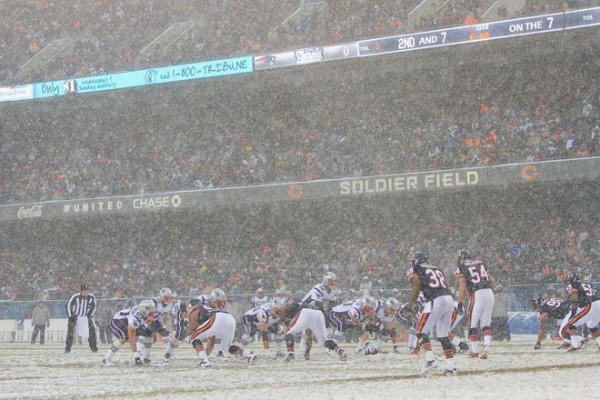
One of the smallest stadiums in the league (61,500), it’s been around since the 20’s, but the Chicago Bears have only been playing there since 1971 although it was the home of the Chicago Cardinals for one season in 1959. It opened as Municipal Grant Park Stadium on October 9, 1924, but that changed a year later, as Edward Mueller won a contest held by a Chicago newspaper. The first plaque was a mistake (“Soldiers”), but Mueller wrote the paper and it was corrected.
